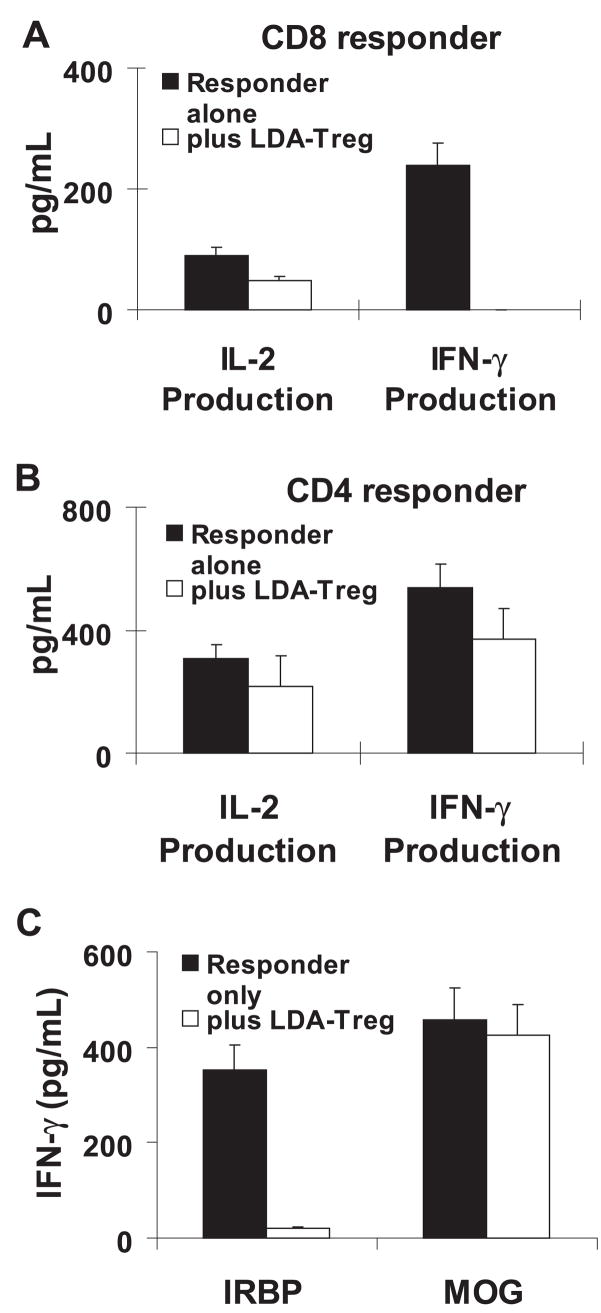Figure 2.
In vitro suppressive effect of Foxp3high CD8 T cells. (A, B) Foxp3high CD8 T cells have a strong inhibitory effect on IFN-γ production by responder T cells and are more inhibitory for CD8 than CD4 responder T cells. Responder CD8 (A) or CD4 (B) T cells were separated from IRBP1-20-immunized B6 mice using flow cytometry, then incubated for 48 hours in 12-well plates (4 × 106 cells/well) with immunizing peptide (10 μg/mL) and APCs in the absence or presence of Foxp3high CD8 T cells at a regulatory T to effector T cell ratio of 1:4, and then IL-2 and IFN-γ levels in the culture supernatants were measured by ELISA. The result shown is representative of those obtained in more than five experiments (P < 0.01). (C) Regulatory T cells isolated from IRBP-induced mice were more suppressive of the uveitogenic T cells than the encephalitogenic T cells. Foxp3high CD8 T cells were isolated from IRBP-immunized B6 mice. Nylon wool column–enriched responder T cells (4 × 106) isolated either from IRBP-or from MOG-immunized B6 mice were incubated for 48 hours in 12-well plates with immunizing peptide (10 μg/mL) and APCs in the absence or presence of Foxp3high CD8 T cells at a regulatory T to effector T cell ratio of 1:4, and IFN-γ levels in the culture supernatants were measured by ELISA.

